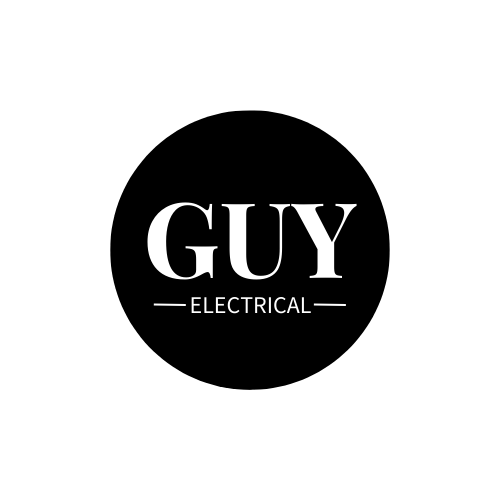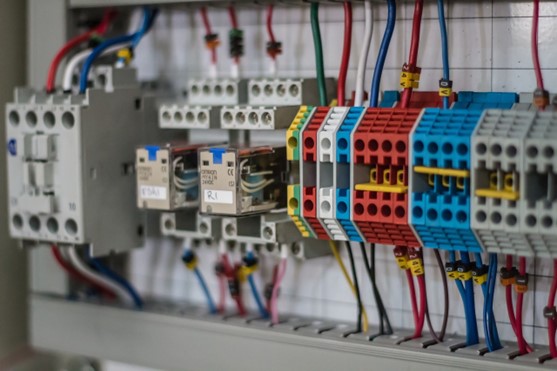Understanding Electrical Panels
What Are Electrical Panels?
Electrical panels, also referred to as breaker boxes or distribution boards, are collections of automated switches that regulate power delivery and protect users from electrical hazards. They are typically located in basements, utility rooms, or garages, and serve as the central hub for electrical circuits in residential, commercial, and industrial buildings.
The Role of Electrical Panels
The primary function of an electrical panel is to cut off the flow of electricity in the event of a fault or overload. It acts as a safety mechanism, protecting the electrical system from damage and preventing electrical fires. The panel distributes power from the main electrical supply to different circuits throughout the building, allowing for individual control and protection of each circuit.
Components of an Electrical Panel
An electrical panel consists of several key components, each playing a vital role in its operation. These include:
- Main Breaker: This is the switch that controls the flow of electricity from the main power supply into the panel. It can be turned off to shut off power to the entire building.
- Circuit Breakers: Circuit breakers are switches that automatically trip and interrupt the flow of electricity when an overload or fault occurs in a specific circuit. They are designed to protect the wiring and electrical devices connected to that circuit.
- Bus Bars: Bus bars are conductive metal bars that distribute electricity from the main breaker to individual circuit breakers. They provide a central point for the connection of circuit breakers and ensure efficient power distribution.
- Grounding System: The grounding system of an electrical panel provides a safe path for electrical current to flow into the ground in the event of a fault. It includes a grounding bar or bus where grounding wires are connected, as well as grounding electrodes such as copper rods driven into the ground.
- Neutral Bar: The neutral bar is where the neutral wires from the electrical circuits are connected. It provides a return path for electrical current back to the main power supply.
- Wiring and Connections: The electrical panel contains various wires and connections that link the different components together. These wires ensure the proper flow of electricity and enable the panel to function as intended.
Signs of a Panel in Need of Upgrade
Electrical panels, like any other system, can become outdated or overloaded over time. Upgrading the panel is necessary to ensure the safety and efficiency of the electrical system. Here are some signs that indicate the need for a panel upgrade:
- Advanced Age: If your electrical panel is very old, it may not meet the power demands of modern electrical devices and appliances. Upgrading to a newer panel with higher capacity can prevent overloads and electrical hazards.
- Insufficient Amperage: If you frequently experience tripped circuits or flickering lights, it may be a sign that your panel does not provide enough power for your electrical needs. Upgrading to a higher amperage panel can alleviate these issues.
- Fuse Box: If your panel still uses fuses instead of circuit breakers, it is likely outdated and no longer meets modern safety standards. Upgrading to a breaker panel provides better protection against electrical faults and allows for easier circuit control.
- Safety Concerns: If you live in an older home with outdated wiring and an aging electrical panel, it is crucial to consider an upgrade. Older panels may lack the necessary safety features to prevent electrical fires and shocks.
- Home Renovations: If you are planning to renovate or add new electrical devices to your home, you may need to upgrade your panel to accommodate the increased electrical demand. Adding subpanels or increasing panel capacity can ensure a safe and reliable power supply.
Common Electrical Panel Problems
Electrical panels, like any other electrical component, can experience issues over time. Here are some common problems associated with electrical panels:
- Overloaded Panels: Overloading occurs when the demand for electricity exceeds the capacity of the electrical panel. This can lead to overheating, tripped breakers, and potential fire hazards. Regular monitoring of panel capacity and load balancing can help prevent overloading.
- Faulty Circuit Breakers: Circuit breakers can wear out or become faulty over time, causing them to trip frequently or fail to trip when needed. Replacing faulty breakers is essential to maintain the safety and function of the electrical system.
- Corroded Connections: Corrosion can occur in the wiring connections within the electrical panel, leading to poor conductivity and potential electrical arcing. Regular inspections and cleaning of connections can prevent corrosion-related issues.
- Outdated Wiring: In some cases, older electrical panels may still have outdated aluminum wiring, which can pose safety hazards due to its tendency to corrode and overheat. Upgrading to modern copper wiring is recommended to ensure proper electrical conductivity and safety.
- Inadequate Grounding: A faulty or inadequate grounding system can increase the risk of electrical shocks and fires. Regular testing and maintenance of the grounding system is crucial to ensure its effectiveness.
Importance of Panel Upgrades and Maintenance
Regular maintenance and upgrades of electrical panels are essential for several reasons:
- Safety: Upgrading an outdated panel reduces the risk of electrical fires, shocks, and other safety hazards. Newer panels are built to meet modern safety standards and incorporate advanced features to protect against electrical faults.
- Reliability: By upgrading to a panel with higher capacity and improved components, you ensure a reliable power supply that can meet the electrical demands of your home or business.
- Energy Efficiency: Upgrading to a more efficient panel can help optimize energy consumption and reduce electricity costs. Modern panels often incorporate energy-saving features such as smart meters and remote monitoring capabilities.
- Compliance with Codes: Electrical codes and regulations are regularly updated to ensure the safety and efficiency of electrical systems. Upgrading your panel ensures compliance with the latest codes and regulations.
- Increased Property Value: Upgrading an electrical panel is a worthwhile investment that can increase the value of your property. Potential buyers are more likely to be attracted to a home with an upgraded and safe electrical system.
Electrical panels play a crucial role in the safe and efficient distribution of electricity within a building. Understanding their components, functions, and the importance of regular maintenance and upgrades is essential for ensuring the safety and reliability of your electrical system. By addressing signs of panel issues and investing in panel upgrades when necessary, you can prevent electrical hazards, optimize energy usage, and increase the value of your property. Remember to consult with a professional electrician for any panel-related concerns or upgrades to ensure the job is done safely and effectively.

